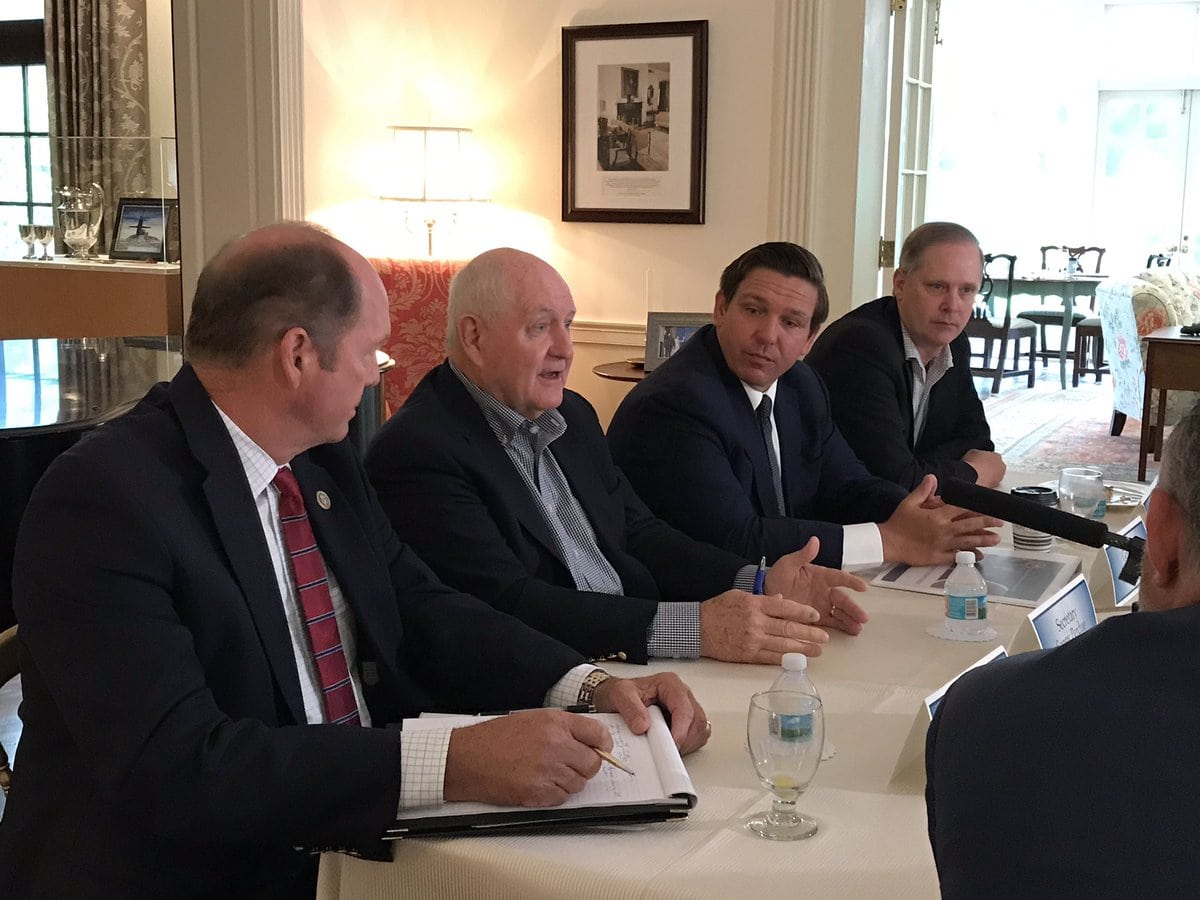
Hurricane Irma steamrolled onto Florida’s peninsula Sept. 10, 2017, beginning a journey north through the center of the state.
The Category 4 storm, with sustained winds of more than 110 miles per hour, brought massive flooding. Florida citrus groves were among the many homes, businesses and landscapes damaged or destroyed.
Finally, nearly two years after Irma, Gov. Ron DeSantis’ administration is unraveling the bureaucracy that was holding back hurricane relief for some of the hardest hit Floridians.
Now, Florida growers start to rebuild, replant and once again grow the world’s best citrus.
Irma arrived at a difficult time for a struggling Florida citrus industry.
Citrus greening, a bacterial disease that kills citrus trees (and for which there is no cure) spread to nearly every grove in the state. Production declined to less than one-third of what it was two decades ago.
But by 2017, Florida citrus was on the verge of a comeback.
While there is still no cure for citrus greening, growers found innovative ways to treat and manage the disease.
This effectively saved trees — and the fruit we love so much.
However, Irma’s damage and destruction dealt a blow the industry, one it could hardly bare. Foliage blown off trees, limbs torn, and some groves were even under water.
They were difficult circumstances for any tree, but particularly debilitating for trees already under stress from citrus greening.
Irma impacted more than 420,000 acres of Florida citrus. The most devastated groves in the state lost more than 90 percent of their crop. Estimates indicate losses to the state’s citrus industry totaling more than $760 million.
“It was a disaster unlike any other,” said Ellis Hunt, a third-generation citrus grower in Florida and chair of the Florida Citrus Commission. “Instead of preparing to harvest our crop at groves in LaBelle and Immokalee, we found about 90 percent of it floating in the groves.”
Losses were felt by more than just the growers.
According to Tom Mitchell, the vice president of Riverfront Packing in Vero Beach:
“The trickle-down effect in this industry is enormous. With no crop to harvest, there are fewer jobs for the community. With no fruit to pack, some packinghouses were at a standstill.
“And with no product to market, Florida missed opportunities to provide the world’s best citrus to consumers around the globe. Our businesses and the many businesses that support what we do suffered greatly.”
In 2018, the federal government finally came through with hurricane recovery support, thanks to the perseverance of Florida’s congressional delegation.
Among them was then-Congressman Tom Rooney.
“As a member of Congress, I worked with President Donald Trump and USDA Secretary Sonny Perdue to provide some much-needed support for an industry that could have been wiped off the map by this final blow,” Rooney said recently. “And I was proud to help secure $340 million in hurricane recovery funds for Florida’s citrus industry.”
Hurricane relief funds were to be distributed in the form of block grants through Florida’s Division of Emergency Management.
The Citrus Recovery Block Grant Program allows growers who had maintained an active farming operation — but suffered severe citrus crop damage — to seek relief.
These block grants were designed to support tree resets, grove rehabilitation and irrigation system repair, among other investments vital to the future of Florida citrus.
Under the DeSantis’ leadership, Florida’s growers have begun receiving the grants for which they applied months ago.
This innovative program was among the topics discussed at a roundtable Friday on how to support industries impacted by Hurricane Michael hosted by DeSantis and USDA Secretary Sonny Perdue.
“We pioneered some new concepts here in Florida — working with the citrus industry,” Perdue said. “[Now], we’ve got all the states wanting block grants.”
That brought a collective sigh of relief from Florida citrus growers.
“After such substantial damage from Hurricane Irma, it takes a lot to rebuild the damaged groves,” Mitchell said. “We are all so grateful for the hurricane recovery support Florida’s citrus growers are receiving. The funds are being used to help us rebuild damaged trees and replant lost trees.”
“Florida’s citrus growers are extremely grateful for the leadership of President Donald Trump, USDA Secretary Sonny Perdue and Gov. Ron DeSantis,” Hunt added.
Known for their resilience, Florida citrus farmers have faced hurricanes, freezes, and diseases over the years.
Nevertheless, they remain committed to growing the world’s best citrus.
Asked if he ever thought of closing shop after all the challenges this industry has faced in recent years, Hunt replied: “We’re citrus growers. That’s what we’ve done for generations, and that’s what we’ll continue to do for generations to come.”



